UPSC Exam > UPSC Notes > Botany Optional for UPSC > Mutations: The molecular basis of mutations
Mutations: The molecular basis of mutations | Botany Optional for UPSC PDF Download
DNA: The molecular basis of mutations
Mutations, which are changes in DNA, are best understood when we grasp how DNA functions. DNA contains the instructions for constructing a human being, and these instructions are encoded in the DNA molecule through a genetic code.
Here's how it all works:
- DNA is composed of a lengthy sequence of smaller units joined together. There are four fundamental types of units: A, T, G, and C, which stand for adenine, thymine, guanine, and cytosine, respectively.
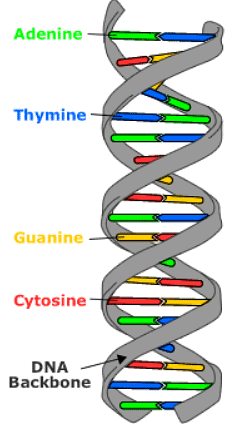
- The arrangement or sequence of these bases serves as the code that contains instructions. Different sections of DNA have different roles: some regulate the activation and deactivation of genes, some have no known function, and some have functions that are not yet fully understood. Yet, other portions of DNA are genes, which carry the instructions for producing proteins. Proteins are long chains of amino acids and play a crucial role in constructing and maintaining an organism.
- DNA that codes for proteins can be divided into codons, which are sets of three bases. Each codon specifies either an amino acid or signals the termination of the protein. Codons are identified by the specific bases they consist of; for example, "GCA" stands for guanine, cytosine, and adenine. Cellular machinery utilizes these instructions to create a string of corresponding amino acids, with one amino acid corresponding to each group of three bases. For instance, the "GCA" codon corresponds to the amino acid alanine. In humans, this process synthesizes twenty different amino acids in this manner. "Stop" codons indicate the conclusion of the newly formed protein.
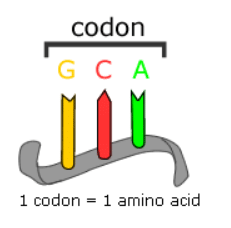
- Once the protein is constructed based on the sequence of bases within the gene, the completed protein is released to perform its function within the cell.
Types of Mutations
There are various ways in which DNA can undergo changes, leading to different types of mutations.
Here's a brief overview of some of these:
Substitution

- Substitution is a mutation where one base is swapped for another, essentially changing a single "chemical letter." For instance, it could involve switching an A to a G in the DNA sequence.
- Substitutions can:
- Alter a codon to encode a different amino acid, resulting in a minor change in the protein produced. An example is sickle cell anemia, caused by a substitution in the beta-hemoglobin gene, which changes a single amino acid in the resulting protein.
- Change a codon to one that still codes for the same amino acid, causing no impact on the protein. These are known as silent mutations.
- Convert an amino-acid-coding codon into a "stop" codon, leading to an incomplete protein. This can have significant consequences, as the incomplete protein likely won't function properly.
Insertion
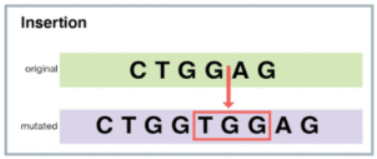
- Insertions are mutations where additional base pairs are inserted into a different location within the DNA.
Deletion
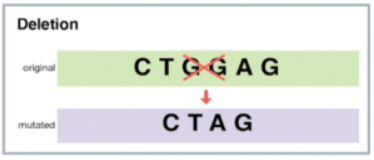
- Deletions are mutations where a portion of DNA is lost or removed.
Frameshift
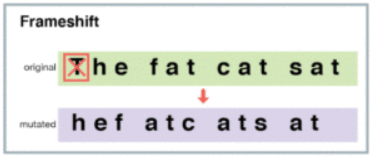
- Protein-coding DNA is organized into codons, each consisting of three bases. Insertions and deletions can disrupt a gene's structure in a way that the message is no longer correctly interpreted, causing frameshift mutations.
- To illustrate, think of a sentence like "The fat cat sat," with each word representing a codon. If we delete the first letter and still parse the sentence in the same way, it loses its meaning.
- In frameshift mutations, a similar error occurs at the DNA level, leading to incorrect parsing of codons. This often results in the production of truncated and non-functional proteins.
These are just some examples of the types of mutations that can occur in DNA. There are other mutation types as well, but this concise list provides an overview of the possibilities.
The Causes of Mutations
Mutations occur for various reasons, and they play a significant role in the process of evolution.
Here are two primary causes of mutations:
DNA Replication Errors
- Many mutations that are relevant to evolution are considered "naturally-occurring." When a cell undergoes division, it must replicate its DNA to produce a new cell. However, this replication process is not always perfectly accurate.
- Occasionally, mistakes happen during DNA replication, leading to changes in the DNA sequence. These changes, even if small, are referred to as mutations. These naturally-occurring mutations introduce genetic diversity within a population, which can be crucial for evolutionary processes.
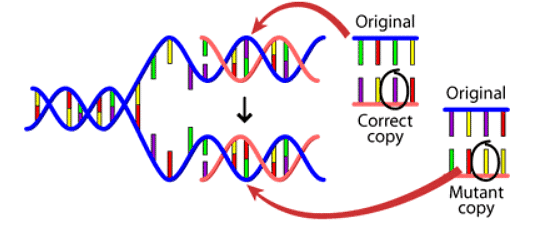
External Influences
- Mutations can also be induced by external factors such as exposure to specific chemicals or radiation. These external agents can cause DNA damage by breaking the DNA strands.
- Importantly, this DNA damage is not limited to human-made sources; even in natural and pristine environments, DNA can be subjected to breakdown. When cells attempt to repair this damage, they may not always restore the DNA to its original state accurately, resulting in mutations.
- The mutations caused by external influences can be more pronounced and potentially have greater impacts on the genetic makeup of an organism or population.
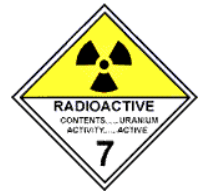
The document Mutations: The molecular basis of mutations | Botany Optional for UPSC is a part of the UPSC Course Botany Optional for UPSC.
All you need of UPSC at this link: UPSC
|
179 videos|143 docs
|
Related Searches
















